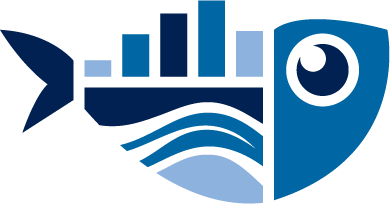Program & STEW FAQs
What is the difference between the SWAMP Bioaccumulation Monitoring Program and the Safe to Eat Workgroup?
The SWAMP Bioaccumulation Monitoring Program (Program) was established in 2006 to monitor water bodies statewide and measure the concentrations of pollutants in fish and shellfish tissue to assess waterbody conditions and whether fish and shellfish are safe to eat.
The Safe to Eat Workgroup (STEW) helps guide Program implementation, and brings together state and federal agencies, academia, and non-governmental organizations with an interest in bioaccumulation related research, fish advisory development, and statewide monitoring.
The Program and the STEW work collaboratively to address questions related to the condition of a waterbody (status), how it changes over time (trends), causes and sources of pollutants and how effective programs are at reducing bioaccumulation in California’s water bodies. Program activities are supported and guided by the STEW, to ensure the data collected through statewide monitoring address these questions and support development of fish advisories.
For more on how the Program and STEW collaborate to conduct bioaccumulation monitoring in California, see the Program & STEW Fact Sheet (English, Spanish, Simplified Chinese, Traditional Chinese, Hmong, Korean, Tagalog)
How often does the Safe to Eat Workgroup meet? When is the next meeting? Who can attend?
The Safe to Eat Workgroup (STEW) generally meets quarterly, in January, April, July, and October. Visit the STEW Meetings page for upcoming and past meeting dates and associated meeting materials (e.g., agendas, recordings, notes).
How can I get involved with SWAMP Bioaccumulation Monitoring Program (Program) and/or the Safe to Eat Workgroup (STEW) activities?
We are always looking for new collaborators and partners! To stay informed of Program and STEW activities and upcoming partnership opportunities, we recommend subscribing to the Safe to Eat Workgroup email list.
To get involved with the STEW, we recommend attending an upcoming meeting.
To explore specific collaboration and/or partnership opportunities with the Program or the STEW, we recommend emailing the Program Coordinator & STEW Co-chair at Anna.Holder@waterboards.ca.gov.
How can a California Native American Tribe or Tribal Organization request a meeting to learn more about SWAMP Bioaccumulation Monitoring Program and/or the Safe to Eat Workgroup activities?
Please complete the Tribal Engagement Interest Form to indicate your interest in connecting with us, your availability to set up a meeting, who should be included in the meeting invitation, and their contact information.
Please note that the Program is interested in meeting with all California Native American Tribes or Tribal Organizations that are interested in bioaccumulation, fish advisory development, and/or statewide bioaccumulation monitoring and communication efforts. A tribe does not need to be federally recognized to schedule a meeting and there is no deadline to complete the form.
What is the SWAMP Bioaccumulation Monitoring Program Realignment? Which Water Board Region(s) have completed the process? Which Water Board Region(s) are up next?
What is the SWAMP Bioaccumulation Monitoring Program Realignment?
The SWAMP Bioaccumulation Monitoring Program Realignment is an effort to intentionally and systemically incorporate Tribal and community perspectives and needs into Program efforts to:
- Build stronger connections between the Program and other Water Boards Divisions, Regions, and programs
- Build stronger relationships with Tribes and communities
- Fill in data and information gaps regarding the question: “Is it safe to eat fish and shellfish from our waters?”
Which Water Board Region(s) have completed the process? Which Water Board Region(s) are up next?
Past and known upcoming Realignment Cycles are provided below:
- The San Diego Region Realignment: 2021 - 2023
- The San Francisco Region Realignment: 2024 - 2026
- The third Realignment cycle region will be decided in 2025
What is the meaning behind the fish icon?
Meet Bardo - your friendly bioaccumulation buddy!

Bardo is the mascot for both the the SWAMP Bioaccumulation Monitoring Program (Program) and the Safe to Eat Workgroup (STEW), and is often added to products developed by either or both groups (e.g., slides, fact sheets, reports, this FAQ resource, etc.)
The name Bardo has mixed beginnings. It’s roots can be traced to German, Aboriginal, and Tibetan origins. Bardo means “water” and is used in several cultures.
